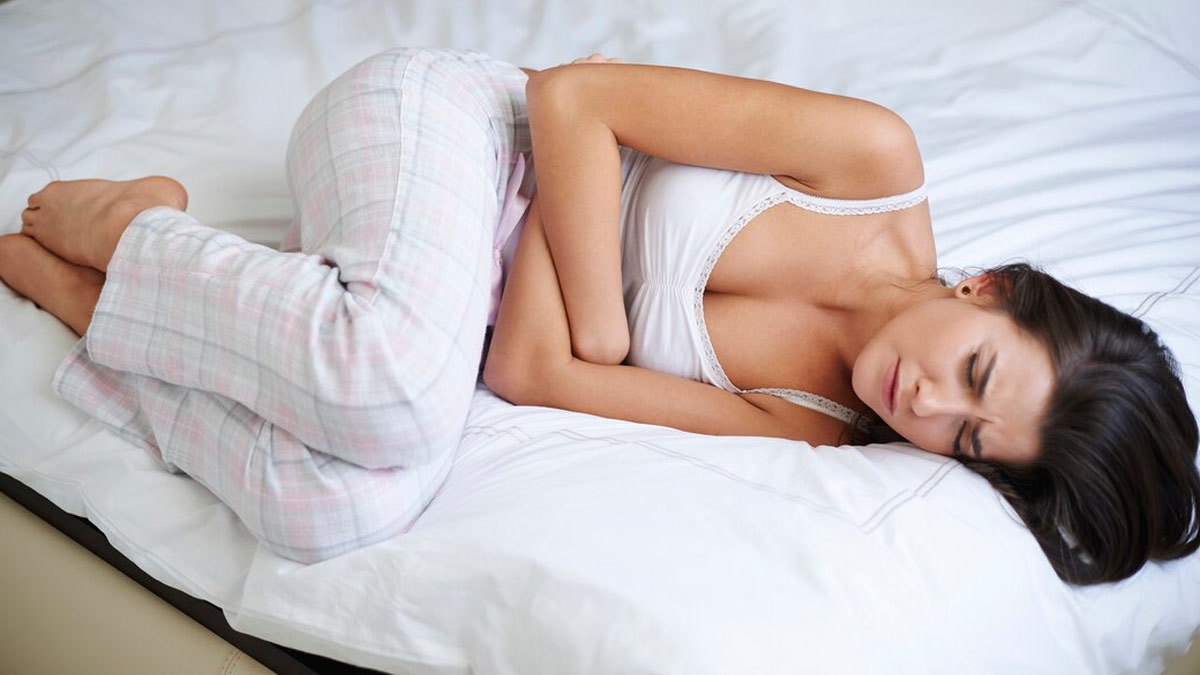
Union Minister of Women and Child Development Smriti Irani on Wednesday openly expressed her disagreement with menstrual paid leaves, saying that menstruation is not a 'handicap' and that it is a natural part of women’s life journey.
Table of Content:-
"We should not propose issues where women are denied equal opportunities just because somebody who does not menstruate has a particular viewpoint towards menstruation,” the BJP leader said, suggesting the economic hindrances it can impose on a woman.
Her statements sparked a fiery debate online on whether or not paid menstrual leaves should be made mandatory at workplaces. While some agree with her, many others argue that menstruation affects each woman differently and symptoms may vary from person to person. Therefore, it is important to note that while not all women experience painful menstrual cramps, there are instances where some individuals experience crippling period pain. We spoke to gynaecologists to list some of the conditions that can worsen menstrual symptoms.
Also Read: Heavy Menstrual Bleeding? Know The Causes, Symptoms And Treatment Of Menorrhagia From An Expert
What Is Dysmenorrhea?

According to Dr Astha Dayal, Lead Consultant, Obstetrics and Gynaecology, CK Birla Hospital, Gurugram, women suffer from different menstrual problems like irregular menstruation, abnormal bleeding, absence of periods, heavy periods, pain during periods, and premenstrual symptoms, of which pain during periods or dysmenorrhea is the most common.
“In about 15–90% of women, pain could be so severe that it affects their quality of life. It can be associated with fatigue, emotional disturbance, abdominal distension, nausea, vomiting, and sleep disturbances,” the doctor said.
Explaining the cause of the condition, Dr Sushma Tomar, Consultant-Obstetrician and Gynaecologist, Fortis Hospital, Kalyan, said that it occurs due to the uterine contractions that expel the endometrium and start bleeding.
“The pain can start from the lower abdomen, back, or legs,” she added.
Dysmenorrhea can be divided into primary and secondary dysmenorrhea. While primary dysmenorrhea is not related to any disease or does not have any physical cause, secondary dysmenorrhea is caused by disorders in the reproductive organs, which mostly occur in older women.
So what are the conditions that can cause painful menstrual periods, or dysmenorrhea?
Endometriosis

Endometriosis is a condition where the lining of the womb starts growing in the wall of the uterus or in the pelvis. This usually causes pain in the lower abdomen during periods, during intercourse, or during passing urine or stools with heavy flow, explained Dr Dayal.
According to the Office on Women's Health, pain is the most common symptom of endometriosis. This includes very painful menstrual cramps that may get worse over time.
A study published in the Journal of Clinical Medicine found that the prevalence of endometriosis in young women with dysmenorrhea and chronic pelvic pain stood between 25% and 73%.
Besides painful periods, the condition can also cause problems getting pregnant.
Also Read: Menstrual Health: Expert Decodes 5 Menstrual Disorders
Pelvic Inflammatory Disease (PID)
PID is caused by infections like chlamydia and gonorrhoea, which are sexually transmitted. It can affect the uterus, fallopian tubes, or ovaries and cause inflammation of the reproductive organs and pain. Some of the common symptoms of PID include lower abdominal pain or tenderness, along with menstrual problems such as painful periods, ovulation pain, and heavy discharge.
Fibroids In The Uterus
Fibroids are abnormal but benign growths in the wall of the uterus that can cause pressure symptoms and painful, heavy periods. About 20 to 80% of women develop fibroids by the time they reach age 50, says the Office on Women's Health, adding that it is most common in women in their 40s and early 50s.

Premenstrual Syndrome (PMS)
PMS can also lead to painful menstrual cramps, which may subside after bleeding begins.
Dr Dayal said, "PMS, or premenstrual syndrome, is a condition where physical symptoms like bloating, weight gain, nausea, acidity, breast pain, migraine, and emotional symptoms like anxiety and depression happen 1-2 weeks before the period and resolve after periods.”
She added, “This needs to be treated with lifestyle improvement, regular exercise, multivitamins, antioxidants, and psychological counselling. But sometimes women do need antidepressants or hormonal pills to manage the condition.”
Managing Dysmenorrhea
When it comes to primary dysmenorrhea, Dr Tomar recommends putting a hot water bag on the abdomen and back. If the pain is quite severe, some painkillers can be prescribed, she said.
In addition, consuming carrots, milk, orange juice, and dark chocolate may also help reduce painful cramps, the doctor added.
Light exercises, hot drinks, and the consumption of multivitamins are further recommended.
In cases of secondary dysmenorrhea, Dr Tomar advised proper medical diagnosis with a PET abdomen examination, vaginal inspection, HSG, ultrasound, CT scan, or MRI to diagnose and treat the condition.
Also watch this video
How we keep this article up to date:
We work with experts and keep a close eye on the latest in health and wellness. Whenever there is a new research or helpful information, we update our articles with accurate and useful advice.
Current Version